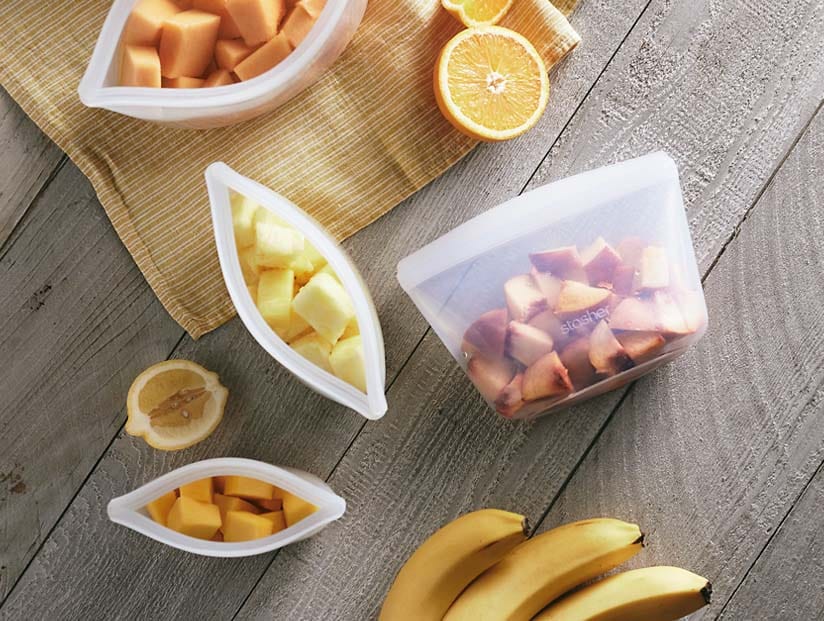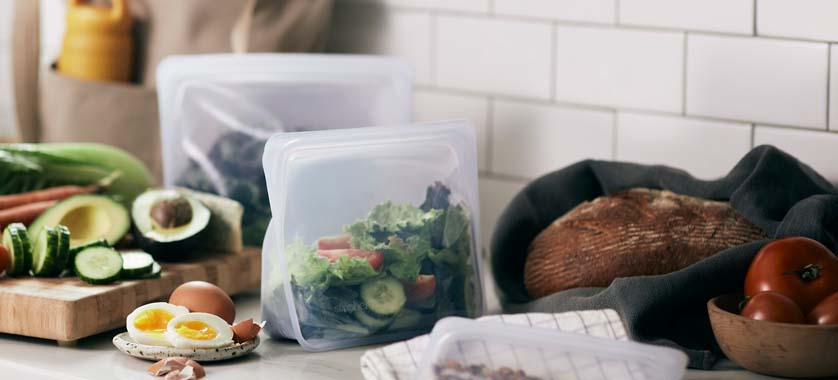
How to Pack for Airport Security
Going through airport security can be a stressful experience: long lines, early morning hours, and that unspoken pressure to take off your shoes and put your electronic devices in a bin at record speed. Since all carry-on baggage needs to be screened – and some items, like liquids and electronics, need to be screened separately – it can be a slow process. The good news? There are some things you can do on your end to make the screening process a little smoother.
By acquainting yourself with current airport guidelines and security requirements – and packing accordingly – you can set yourself up for a seamless passage through security and to your gate. In this guide, we round up our best sustainable carry-on packing tips to make airport security a breeze and help you avoid single-use plastics (like those plastic bags for liquids) in the process.
Check the TSA Airport Security Rules Ahead of Time
In the U.S., rules and regulations put forth by the TSA (Transportation Security Administration) do change from time to time, whether that’s in regards to the size and shape of a TSA-compliant bag, security restrictions surrounding a bag’s contents, or general rules enacted for everyone’s safety and well-being.
So to avoid accidentally packing something you shouldn’t, do your research ahead of time and double-check the TSA’s rules regarding prohibited items versus what’s permitted in carry-on luggage. After all, no one wants to be that person who accidentally brought a full water bottle and is now forced to chug the whole thing or regretfully throw it away while the rest of the line watches on. The moral of the story? Visit the TSA’s website for a refresher before you pull up to the airport.
Use a Carry-On Bag with Multiple Compartments
Packing all of your travel must-haves into a backpack, bag, or small rolling suitcase can be quite daunting! But choosing carry-on luggage with lots of compartments will help keep you organized, streamline your airport security experience, and make your life much easier on the plane, too. One of our most important travel tips for packing is to opt for a carry-on bag or backpack that has pockets or compartments for the things you’ll need easy access to at the check-in counter, security checkpoint, boarding gate, and on the plane.
Examples of handy pockets, spaces, and compartments include:
- A built-in laptop sleeve
- A small compartment for your wallet, boarding pass, ID and/or passport
- A space for your toiletries and other travel-friendly liquids (more on that in a minute)
By ensuring everything has its own designated place, you can quickly take what you need out of your bag, as well as easily bypass those heart-stopping moments when you think you’ve left something behind.

Prepare Your Travel Liquids
All travel liquids, gels, and aerosols in your carry-on must be in small bottles – 100ml (3.4oz) or less – and should fit in one clear resealable bag no bigger than a quart size. That includes any makeup you packed.
While separating out your liquids and transferring them to travel-sized containers might sound like a hassle, it’s saving you time in the long run. Failing to separate your liquids in your carry-on can lead to additional screening and delays.
So save yourself the headache and follow the TSA’s 3-1-1 liquids rule:
- Each liquid, gel, or aerosol must be in a container that’s 3.4 ounces or less
- These containers must be placed inside a quart-sized, clear, resealable bag
- Each passenger is allowed one such bag of travel liquids
But using a new disposable plastic bag for every trip contributes to the masses of single-use plastics in our landfills and oceans, while reusing a disposable plastic bag can lead to rips or spills. To protect the planet and your carry-on’s contents, opt for a TSA-friendly Stasher Quart Bag or any of our travel-friendly liquid bags.
Unlike single-use plastic bags, Stasher bags are super durable and endlessly reusable, so you can bring the same Stasher bag with you every time you travel. And the leak-free design means that everything from your laptop to your boarding pass is protected from leaks, spills, and accidental cabin-pressure induced bursts.

Have Your Electronic Devices Ready for Screening
Once you have your ID and boarding pass checked by a TSA agent, you’ll move ahead into the next section of the security checkpoint for bag screening. As you load your carry-on luggage onto the conveyor belt that goes through the x-ray machine, you’ll be asked to remove any electronic devices from your bags and to place them into separate trays.
This includes devices like laptops, tablets, iPads, kindles, e-readers, large cameras, and more. Remove them from their cases, and put each electronic device in its own bin to be screened separately. In general, electronics that are the size of a cell phone or smaller (like headphones, AirPods, phones, or small cameras) can be left inside your carry-on bag.
Knowing all of this ahead of time – and using a bag with compartments that lets you quickly access your electronic devices – will help this process go faster for you, and for everyone else in line behind you.
Empty Your Pockets & Remove Your Belt
As your bag moves along the conveyor belt to be screened by the airport x-ray, you’ll be screened either by an airport body scanner or a metal detector. For this step, be sure to take off your belt, if you usually wear one, and to remove any loose change or keys from your pockets – all of this will need to go in a bin on the conveyor belt with the rest of your belongings. (Jewelry can usually be kept on.) This extra step of emptying your pockets and removing your belt is ultimately a time-saver – if you forget to do so, you’ll have to pass through the scanner again and possibly be subject to a pat-down security procedure as well, taking up additional time.
Wear Slip-On Shoes
Prior to going through the body scanner or metal detector, you’ll likely be asked to remove your shoes for security screening purposes. Our time-saving tip is to wear slip-on shoes to the airport! Comfy footwear that slips on and off (like sandals, slip-on sneakers, or flats) will make your airport security experience much quicker compared to shoes that need to be buckled, laced, or tied.
While airports aren’t usually the most peaceful of places, you can save yourself a lot of time and stress by being prepared and knowing how to pack for airport security! As they say, failing to plan is planning to fail, so set yourself up for success by doing the following:
- Double-check TSA guidelines ahead of time
- Separate out your liquids into a TSA-friendly Stasher bag
- Haveg electronics, shoes, and items in your pockets ready to be placed in bins for separate screening
- Wear shoes that are comfortable and can be easily slipped on or off
And if you’re traveling with checked luggage, make sure you read our tips for packing a suitcase. From all of us at Stasher, we’re wishing you safe travels and a smooth airport security experience!








